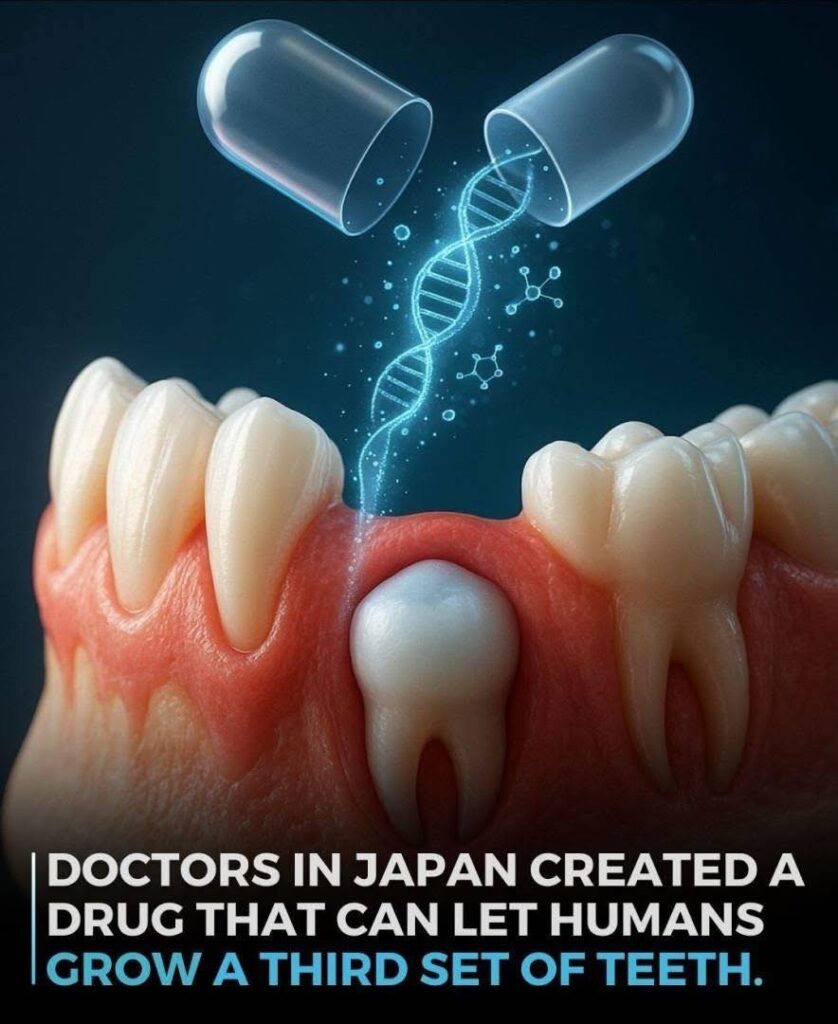
Humans May Soon Regrow Lost Teeth! | The Future of Dentistry
For centuries, losing an adult tooth meant relying on dentures, implants, or bridges. But now, scientists are on the verge of making something once thought impossible a reality: the ability for humans to regrow lost teeth naturally.
Groundbreaking research in Japan is leading the way, and experts predict that a tooth-regrowth drug could be available by 2030.
The Science Behind Tooth Regrowth
Researchers at Kyoto University Hospital have developed a drug that works by targeting a protein called USAG-1, which suppresses tooth growth. By blocking this protein, dormant tooth-forming buds can be reactivated—essentially allowing the body to grow new teeth.
Animal studies in mice and ferrets showed promising results, with subjects successfully regrowing lost teeth. Encouraged by these outcomes, researchers began the first human clinical trials in September 2024.
The initial trial includes 30 men aged 30–64 who are each missing at least one molar. So far, the drug has shown no serious side effects in animal testing, and if successful, it could move on to children with congenital tooth absence.
Why This Breakthrough Matters
Tooth loss affects millions worldwide due to decay, gum disease, injury, or aging. Current treatments like implants and dentures are effective but come with challenges such as:
High cost and accessibility issues
Risk of infection or rejection
Lack of natural tooth function and sensation
If this treatment proves successful, it could transform dentistry by offering a biological, permanent solution—your body simply regrows real teeth.
Other Innovations in Dental Regeneration
The excitement doesn’t stop in Japan. Around the world, scientists are exploring new ways to repair and regenerate teeth:
Keratin-based enamel repair: Researchers in the UK are developing eco-friendly dental treatments made from sheep’s wool and human hair that can repair weakened enamel. This may soon appear in toothpaste and gels.
Bioengineered teeth: Scientists at Tufts University have successfully grown teeth in pigs using hybrid cell technology, paving the way for human applications in the future.
Together, these innovations point toward a future where dental visits may focus less on repairing damage and more on regenerating natural teeth.
When Could Tooth Regrowth Be Available?
Experts estimate that, if trials continue successfully, the first patients could receive tooth-regrowth treatments by 2030. Children with congenital tooth loss are expected to benefit first, followed by adults dealing with missing teeth.
Final Thoughts
The idea that humans may soon regrow lost teeth is no longer science fiction. With ongoing clinical trials, breakthroughs in biomaterials, and advances in regenerative medicine, the future of dentistry looks brighter—and more natural—than ever before.
In just a few years, replacing lost teeth may not mean a trip to the dentist for implants, but a simple treatment that allows your body to grow them back naturally.